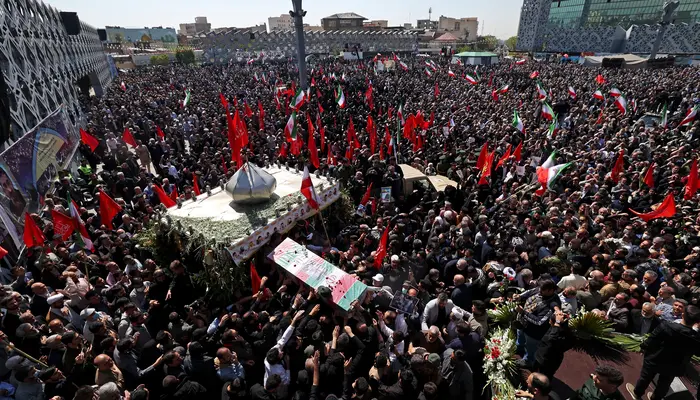A large crowd gathered in the city of Yazd, Iran, on Wednesday for the funeral procession of six Iranian soldiers reportedly killed in an Israeli airstrike earlier this week. Videos shared by Tasnim news agency on X showed hundreds of mourners, including local religious scholars and military officials, taking part in the somber procession.
The ceremony took place at the Yazd Grand Mosque, where prayers and tributes were held before the soldiers were laid to rest. Iranian Student News Network (SNN) aired footage of military personnel attending the formal ceremony, which included a guard of honor and Quranic recitations.
The six soldiers were reportedly killed during a massive explosion at a military site in Yazd, coinciding with a broader US-led strike campaign on Iran’s nuclear infrastructure.
Explosion Tied to Regional Escalation
The explosion in Yazd occurred on Sunday, around the same time as coordinated US airstrikes on nuclear facilities in Isfahan, Fordow, and Natanz. Iranian state media has since confirmed that one of the targeted sites in Yazd was a military facility, though it has not officially named Israel as the perpetrator in that specific strike.
However, Iranian officials have publicly accused Israel of increasing covert operations inside the country, including cyberattacks, targeted killings, and aerial strikes on sensitive infrastructure.
Read: World Bank Approves $250 Million for Lebanon to Rebuild War-Ravaged Infrastructure
This most recent attack — and the loss of six soldiers — has stoked public anger and renewed calls for retaliation. Iranian defense officials vowed that “the blood of our martyrs will not be spilled in vain.”
Tensions Continue Despite Ceasefire Claims
The funeral comes at a time of extreme volatility in the region, despite reports earlier this week of a US-brokered ceasefire between Israel and Iran. While both sides have claimed “victory” and paused direct attacks, tit-for-tat operations and strikes on proxy sites appear to continue behind the scenes.
Yazd, traditionally seen as a quiet and historic city, is now part of the growing battlefield as Iran’s military and nuclear sites face increased targeting.
Iranian officials have pledged to strengthen domestic air defense systems and tighten security at all strategic locations. Meanwhile, the public funeral in Yazd served not only as a tribute to the fallen soldiers but also as a public display of unity and resistance in the face of foreign aggression.
Follow us on Instagram, YouTube, Facebook,, X and TikTok for latest updates
